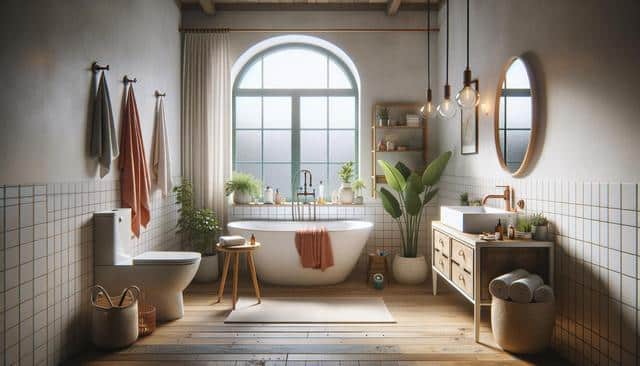Smart Tips for Remodeling Your Bathroom Without Overspending
Bathroom remodeling doesn’t have to break the bank. Explore budget-friendly tips such as updating fixtures, painting cabinets, or adding inexpensive accessories to create a fresh, stylish space while sticking to your budget for maximum impact.

Plan Ahead and Set a Realistic Budget
Before any work begins, it’s essential to have a solid plan and a realistic budget. Knowing exactly what you want to achieve helps avoid unexpected costs and last-minute changes. Begin by listing all the updates you’d like to make—whether it’s replacing the vanity, updating tiles, or adding storage. Then, research the average cost of each item and allocate a portion of your budget accordingly. Don’t forget to set aside around 10-15% of your budget for unexpected expenses. This cushion will help you stay financially comfortable if any surprises arise during the project.
Another important aspect of planning is prioritizing your needs versus your wants. For instance, structural changes such as moving plumbing lines can be expensive and might not be necessary for a cosmetic update. Focus on aesthetic changes that offer high visual impact at a lower cost. Creating a simple spreadsheet or using a home renovation budgeting app can help you track spending and keep everything organized.
Refresh Instead of Replacing Fixtures
One effective way to save money during a bathroom remodel is to refresh existing fixtures instead of replacing them. Sinks, tubs, and toilets can often be revived with a deep clean or refinishing, significantly reducing costs. For example, reglazing a bathtub is usually much cheaper than purchasing a new one and paying for installation.
If your fixtures are outdated but still functional, consider updating their appearance. Swapping out old faucet handles or showerheads for new, modern ones can create a dramatic visual impact. These small changes are typically inexpensive and easy to install, even for DIYers. Additionally, installing new drawer pulls or cabinet knobs can breathe new life into old cabinetry, making everything look more polished and updated.
Use Paint to Transform Your Space
Paint is one of the most budget-friendly tools for transforming any room, and bathrooms are no exception. A fresh coat of paint on the walls can make a small bathroom feel bigger, brighter, and cleaner. Consider using light, neutral tones to open up the space visually, or choose a bold accent wall for a more dramatic effect.
Don’t stop at the walls—painting your cabinets and even your tiles can offer a whole new aesthetic without the need for replacement. Specialized tile and cabinet paints are available in a variety of finishes and colors, allowing for a customized look at a fraction of the cost of new materials. When painting in a bathroom, always use moisture-resistant paint to prevent mold and mildew build-up.
Incorporate Low-Cost Decorative Touches
Decor doesn’t have to be expensive to be effective. Small, thoughtful additions can make a big difference in the overall ambiance of your bathroom. Think about incorporating inexpensive accessories like:
- Framed wall art or prints
- Stylish soap dispensers and toothbrush holders
- Matching towels and bath mats
- Inexpensive indoor plants for a natural touch
Lighting is another area where small changes can make a big difference. Swapping out outdated light fixtures for newer, energy-efficient models can brighten up the space and reduce electricity bills. Consider adding LED strip lights under cabinets or mirrors for a modern look that’s both functional and attractive.
Take Advantage of DIY Opportunities
Labor costs can quickly eat into your remodeling budget. One way to reduce expenses is by taking on some of the work yourself. Many bathroom projects, such as painting, installing shelves, or laying peel-and-stick tiles, can be completed without professional help. There are plenty of online tutorials and home improvement forums that offer step-by-step instructions for beginners.
While it’s important to know your limits—especially when it comes to plumbing or electrical work—tackling simpler tasks can save a significant amount of money. Even small accomplishments like resealing your tub or installing new towel bars can contribute to the overall remodel without requiring a contractor. Just be sure to invest in the right tools and take safety precautions as needed.
Conclusion
Remodeling your bathroom on a budget is entirely possible with the right planning and creative strategies. By focusing on updates that deliver high visual impact, reusing or refreshing existing elements, and taking on manageable DIY tasks, you can transform your bathroom into a stylish and functional space without overspending. Whether you’re working with a tight budget or simply want to maximize your investment, these tips offer practical ways to achieve a refreshed look while keeping your costs under control.